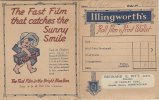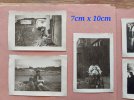Remember when you used to take the film from your camera into the local chemist shop to get the film processed ? Then you'd wait a couple of weeks for the photos to be returned in a wallet similar to the ones below. On one side of the wallet were your photos, on the other side were the negatives from the original film roll.
Not sure all chemists offered this service, but given the length of time it took them to produce the photos from the film, I'm guessing they must have sent the rolls of film away to be processed somewhere else.
Viv


Not sure all chemists offered this service, but given the length of time it took them to produce the photos from the film, I'm guessing they must have sent the rolls of film away to be processed somewhere else.
Viv


Last edited:



